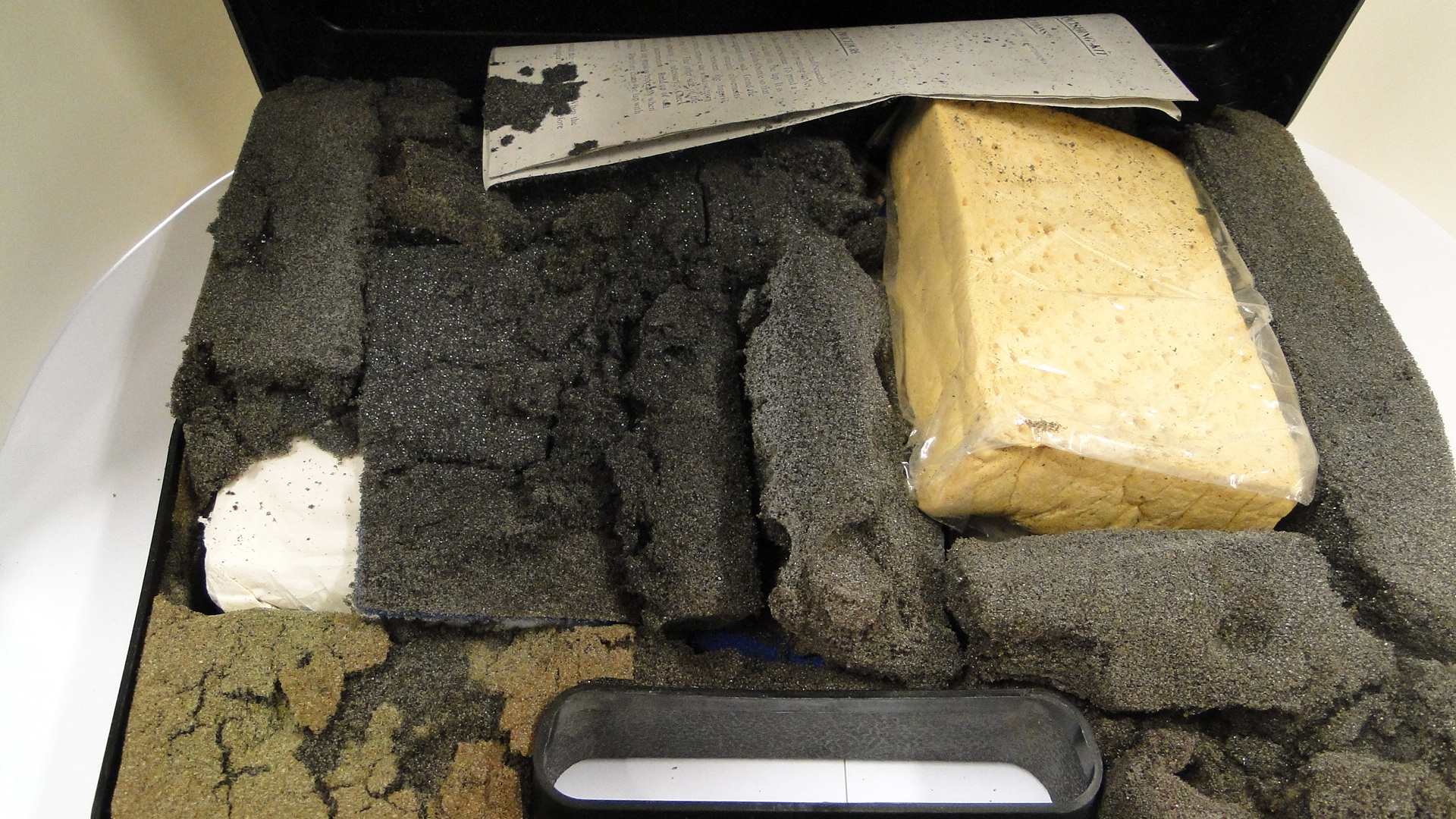Plastics
Soft Polyurethane ester (PUR ester soft)
General information
Description
Polyurethanes come in various types and forms. Best known and most produced is PUR foam. Soft PUR foam exists in an ester and an ether variety. Their degradation differs; esters become tacky and lose their flexibility, ethers will crumble after some time.History
The first polyurethanes were developed in 1937. Around 1954 commercial production of soft PUR foam started.Production, Application, Appearance
In the factory soft PUR foam is produced as sheets or blocks. Artists can make their own soft PUR foam by mixing the two components with a blowing agent. In the past soft PUR ester foam was used a lot. When the problems with its durability came to light, it was replaced by soft PUR ether foam. It is used for particular applications such as sound insulation.Properties
Material properties
ThermosetDensity: 1.1-1.25 g/cm3; foam: ~0.011 g/cm3
Melting point: 141-157°C
Glass transition temperature: -60 to -19°C
Identification properties
Cell structure (foam): openSmell: can have a sweet chemical smell
Touch: no characteristic touch
Sound: no characteristic sound
UV-radiation (when clear): not applicable
Polarizing filters (when clear): not applicable
Degradation
Process
Soft PUR esters undergo mainly hydrolysis.Details
PUR is considered a problem plastic. The soft foams, in particular, can degrade rapidly and cause problems. Due to the open cell structure degradation occurs not only on the surface but in the core as well. A protective layer applied to the surface can slow down degradation to some extent.Symptoms
Discolouration; loss of mechanical properties such as elasticity and collapse of structure; surface becomes tacky; crumbling.Susceptibility
UV-radiation: MediumLight: Medium
Oxygen/Ozone: Low
Temp: Low
RH: High (setpoint)
Preventive conservation
Recommendations
UV-RADIATION: keep below 75 µW/lm UV filter for daylight and fluorescent light - reduce intensityLIGHT: 1 slight change in approx. 30 Mlx.h Moderate light dose - control intensity and exposure time
OXYGEN / OZONE: ambient conditions
TEMP: common indoor conditions 10-30°C; a lower temperature will slow down hydrolysis
RH: 10-30% RH fluctuations: within bandwidth
Other names
- PU foam
Am I dealing with...
TAGS
- Sticky
- Crumbly
- Skin
- Open cell structure
- Memory Foam



